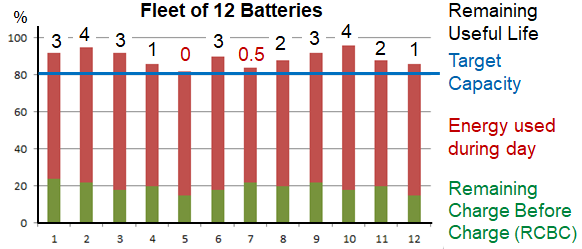Newsletter - May 2023
In support of battery electrification, Cadex is entering a new era offering products that provide "Deep Battery Diagnostics" (DBD). Clean energy must deliver similar transparency in performance evaluation as traditional power sources using fossil fuel, but we realize that battery diagnostics has been lagging behind other technologies Without a mature way to read battery state-of-health (SoH) users ask: “Will my battery die quietly or with a bang?” Lesson learned reminds us of railway tracks laid across the continent in mid-1800 that were too frail and needed replacement and adding double the number of ties to prevent breakage.

Figure 1: Transcontinental railway in the 1800s
Lesson learned also applied to early jet travel. In the 1950s, the elegant Comet developed cracks at rivet points around the windows after 9000 flying hours that caused the fuselage to open and the plane to crash. Reinforcement with round windows fixed the problem.

Figure 2: Early passenger jets developed cracks in the cabin that causes crashes
In the mid-1960s, industry made milestones by introducing Reliability-centered Maintenance (RCM) by establishing calculated maintenance intervals on mechanical parts relating to wear-and-tear. RCM was first applied on the Boeing 747 to improve air safety; practices that were adopted by nuclear plants, in defense, for railways and other industries.

Time has come to also introduce diagnostics in batteries by examining the electrochemical evidence relating to performance. As battery usage expands, new standards are being developed to assess SoH. The UN and EU are working on norms to disclose the Usable Battery Energy with a targeted accuracy of 95%. Diagnostic technologies also observe safety as the battery ages and prompt replacement if the capacity drops below a set level. SoH further assists in the resale of a used battery and products it powers.
Deep Battery Diagnostics (DBD)
Deep Battery Diagnostics uses a four-prong approach that enables estimating the Remaining Useful Life (RUL) of a battery. The process as illustrated in Figure 3 measures capacity, the leading health indicator; sets the Minimal Operational Reserve Energy (MORE); and tracks performance decline induced by loading practices, temperature, charging speed and depth-of-discharge.

Figure 3: Four-prong approach tells the Remaining Useful Life of a battery
Obtaining DBD is simplified by integrating the function into service devices, such as charger, battery analyzer and testers. Cadex offers these devices for portable, mobile, auto and stationary batteries.
Portable batteries with System Management Bus (SMBus) provide “digital capacity” and serial number when serviced in a Cadex charger and battery analyzer. Capacity assessment with “dumb” batteries can be obtained with a battery analyzer or a charger with parser technology. Larger batteries are tested with electrochemical impedance spectroscopy (EIS) by applying a frequency scan. Available with Spectro™, the tests assess battery SoH by analyzing the Nyquist plot with AI, similar to camera with face recognition.

Figure 4: Remaining Useful Life is given in years
Observing the Remaining Charge Before Charge (RCBC) sets the Minimal Capacity as shown in Figure 3. An analogy is an aircraft carrying enough fuel for a safe landing. RCBC should be 10–20% after a routine day to allow for the unexpected. If low, the Target Selector should be set higher to increase energy reserves; plenty of reserve enables relaxing the setting to keep batteries in service longer.
Predictive Fade shown in Figure 3 first relies on average data with adjustment when cloud analytics becomes available. Cadex READ in Figure 5 shows service units connected to a host and cloud analytics

Figure 5: Cadex READ works in standalone, connects to a host and provide cloud analytics
Service devices with DBD provide performance transparency in batteries without user intervention. We attain this by combining smart battery technology, multi-model EIS and IoT into Cadex READ, a system that provides the Remaining Useful Life of a battery to give risk management in battery user requirements.
